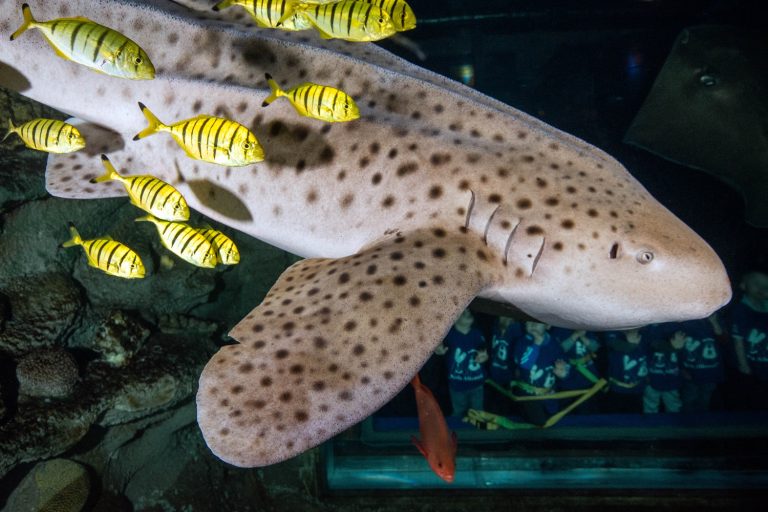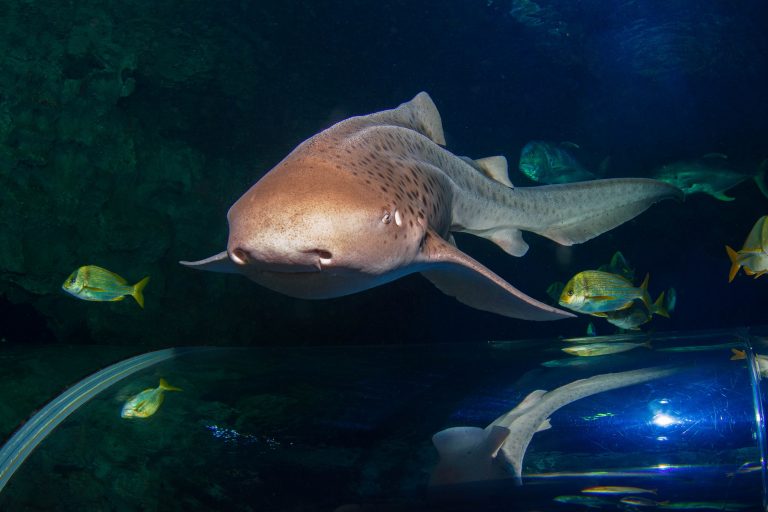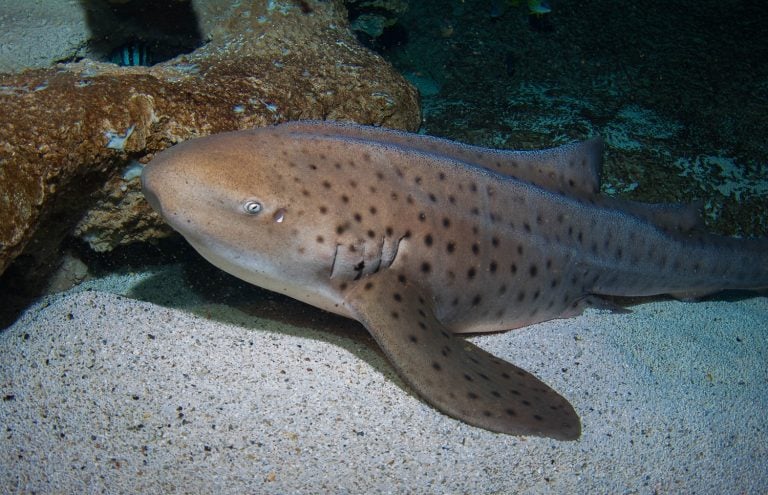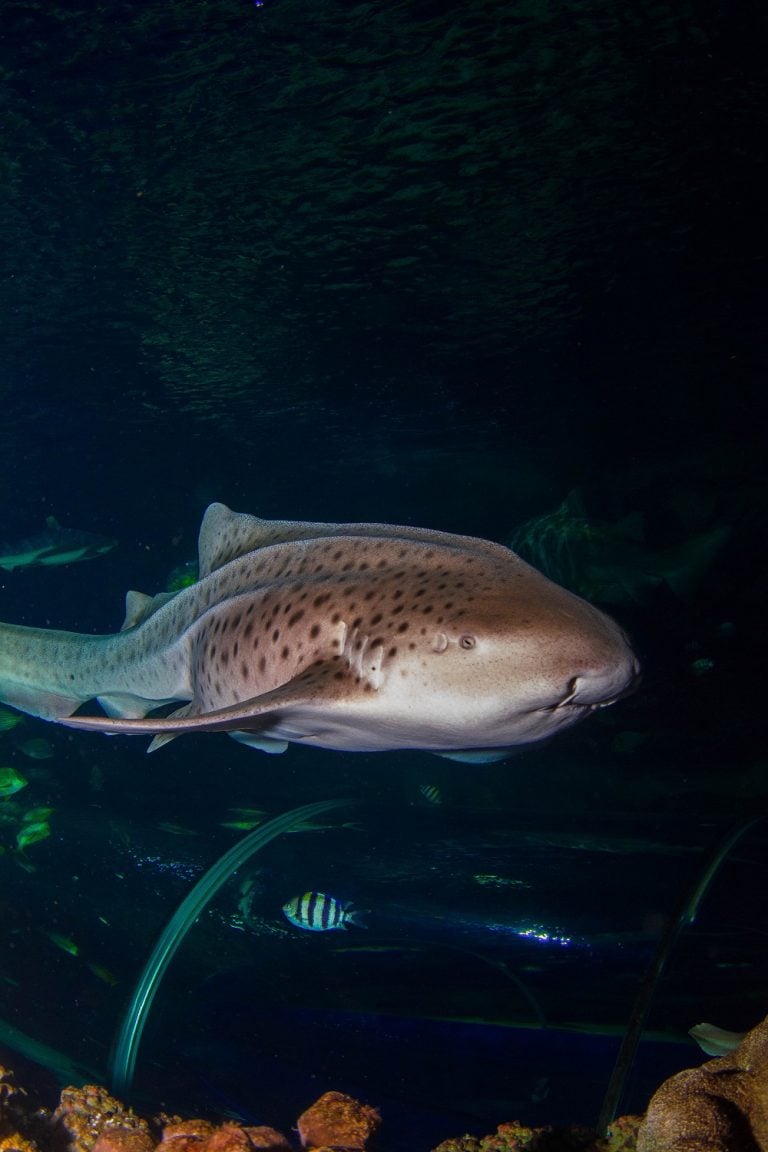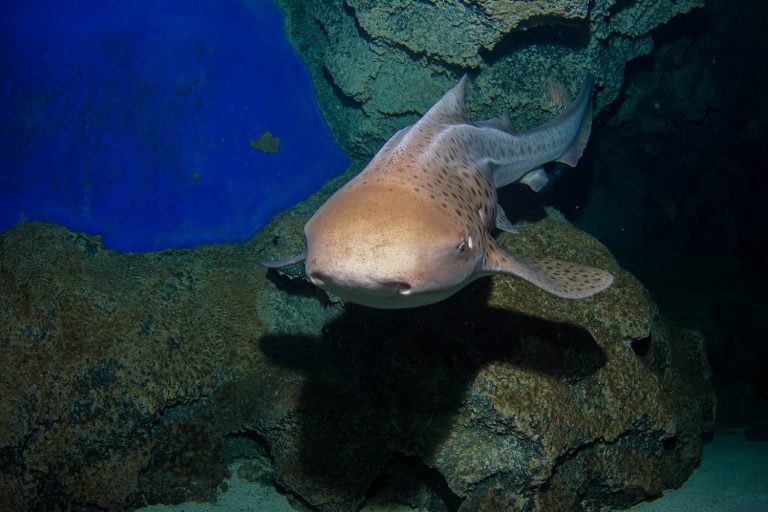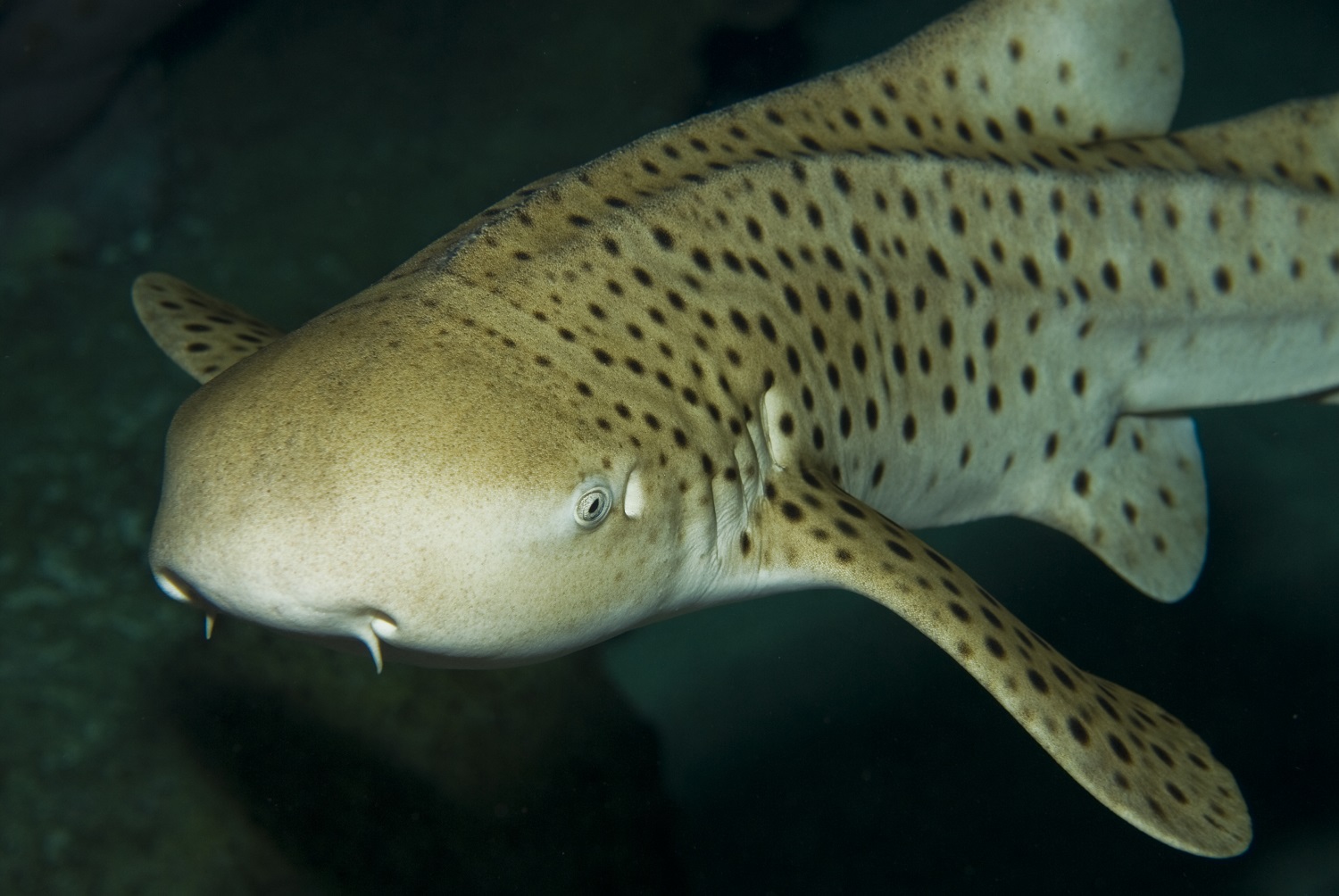
Slow-moving and easy going, zebra sharks (Stegostoma fasciatum) might be the most chilled out shark around – and one of the most distinctive looking too! They’re also known for a variety of other reasons too, from the names they’re known by in different countries to the way they can give birth. Plus, they’re one of the biggest sharks we keep here too.
Before you come see them for yourself at Blue Planet Aquarium, let’s learn all about these fascinating animals below…
How to identify a zebra shark
The first thing you’ll notice about a zebra shark is the way they look. Despite their shark-y status, they look pretty cute if you ask us, what with their rounded bodies, small mouths and dotted patterns that cover them. Both male and female sharks can grow up to 3.5 metres in size too.
That said, they don’t look quite the same at birth. Juvenile zebra sharks are dark brown/black with white stripes that look like a zebra’s. This pattern is a handy little defence mechanism for these youngsters; their stripes look very similar to those of venomous sea snakes, and so other species keep their distance just in case. The patterns on a juvenile zebra shark body also make it easier for them to hide too!
As they get older, these stripes fade over time and turn into dots which remain there for the rest of their lives. How cool is that? In fact, the two look so different at these stages of their life that, until 1823, scientists thought they were two separate species!
Where do zebra sharks live?
Zebra sharks live in the shallow coral reefs of the sub-tropical Indian and South Pacific oceans. They’re nocturnal, searching for their meals at night. By day, they take it easy on the sandy seabed, pumping water over their gills using a jet-like organ called a spiracle to breathe when they aren’t moving – which a lot of other species of shark have to do to stay alive.
Sometimes, when the current is strong enough, the zebra shark has been known to “surf”, adjusting its fins in different ways so it can remain perfectly steady when in water.
For more interesting info about where sharks call their home, check out these fun facts about shark habitats here.
What do zebra sharks eat?
It’s bad news for molluscs and crustaceans – zebra sharks love dining on these the most, though they’re pretty fond of small fish too, especially since zebra sharks have become well adapted to seeking them out.
The zebra shark’s body is super flexible, which makes them great at squeezing into small spaces to look for invertebrates when it’s dinner time. They use things called barbels (small, whisker-like sensory organs on their snouts) to detect prey in the dark, before their small mouths and powerful buccal muscles suck unsuspecting prey straight out of their shells. They can even use their strong, flat teeth to crunch through shells that are especially tough.
Do zebra sharks lay eggs?
Zebra sharks are oviparous, so yes, they do lay eggs. Once they’ve mated, a female uses special fibres to attach between one and four egg casings directly and securely to the seafloor. Amazing, right? Baby zebra sharks develop inside the casing for around six and a half months before they nibble their way of the egg. They don’t need to be mothered either: baby sharks are born fully independent, swimming and hunting on their own from the get-go.
That’s not all. In 2011, scientists discovered that zebra sharks are capable of having virgin births. Here, completely unfertilised eggs turn into embryos without any interaction from a male zebra shark. And though this isn’t rare in invertebrate species, it’s definitely rare in vertebrates like sharks.
Where can you discover zebra sharks at Blue Planet Aquarium?
You can find the zebra shark at Blue Planet Aquarium in our Ocean Exhibit, which is one of Europe’s largest collection of sharks. As well as the likes of bamboo sharks and sand tiger sharks, this 4 million-litre tropical display also features all sorts of colourful fish and ray species to see too!
Why not find out what it’s like to look after a shark for a living by heading
Fun facts about zebra sharks
- Due to their spots, they are sometimes known as leopard sharks in Australia and the UK. This is not to be confused with the actual leopard shark, which is a species of houndshark, in the USA.
- Zebra sharks in aquariums have to receive the same level of nutrients they’d get in the wild. To do this, keepers hide a multivitamin inside a fish which is then stuffed into a squid. The name of this? A “fish burrito”, of course!
- The longest zebra shark on record measured 12 feet long
- The zebra shark’s tail accounts for half the length of its entire body
- Zebra sharks show no aggression towards humans, and other than larger sharks, they have few predators to speak of
- In shallow waters off the coast of southeast Queensland, hundreds of zebra sharks meet up every summer. They’ve looked into it, but scientists still aren’t sure why it takes place…
- In the wild, zebra sharks can live up to anywhere between 25 and 30 years
- At the start of the mating process, a male shark will bite on the female’s pectoral fin to gain her attention – though this approach isn’t always successful
- The coral reefs zebra sharks dwell in can reach lengths as deep as 203 feet
Type
Shark
What do they eat?
Small fish, molluscs and crustaceans
Size
Up to 2.5metres
Water Type
Sub Tropical/ Temperate
Where are we?
Indo-Pacific

